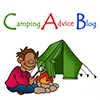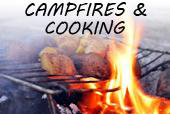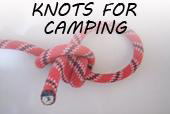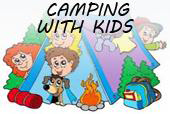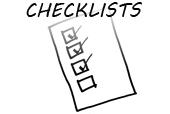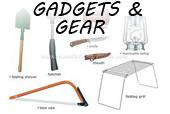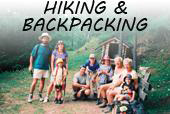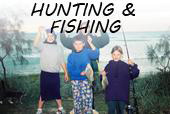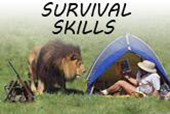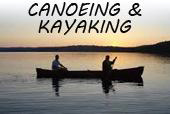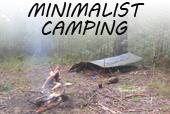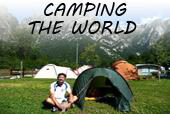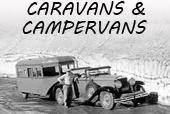Between 300 and 600 grizzly bears live in Yellowstone National Park. Grizzly bear males can range upward of 700 pounds. They have longer, straighter claws that are designed for digging for food. They eat grasses, shrubs, wild plants like dandelion, roots, bulbs, tubers, and rodents like gophers. Grizzly bears also feed on elk and bison carcasses, as well as their calves. In the summer, they can be seen fishing for trout, and, just like the rest of us, they enjoy the late summer berries found in the park.
To see bears on your Yellowstone vacation, try visiting the park from March to November. Bears are generally active at dawn and dusk, and during the night. They can be sighted along the roadside, but are more likely to be observed in open areas along the edges of trees. In 2007 more than 2500 sightings of bears were reported in Yellowstone National Park.
Bears can be very dangerous. They are large and strong. Females are especially aggressive when protecting their cubs from perceived threats. Therefore, it is very important to observe established safety rules when setting out to view bears. The first and most important rule is to not feed the bears. It is actually against the law to feed the wildlife in Yellowstone National Park. It teaches the animals not to be afraid of humans and it turns them into beggars looking for a handout. They then become even more aggressive about trying to get food from humans and eventually become pests that have to be destroyed or relocated.
Many people enjoying their Yellowstone vacations stop in the roadway and get out of their vehicles to photograph bears they see. This is also dangerous. Bears may feel threatened by this and charge. If you leave your vehicle, you have little protection from all those big claws. Park officials recommend that if you want to stop and look, park only in designated areas and remain in your car. If you absolutely must get out, stay at least 100 yards from any bears, including cubs that seem to be alone. Be assured, Mom is nearby watching your every move.
Other simple safety precautions when observing bears include avoiding sudden movements that might be interpreted as aggression on your part, not approaching or following the animals, and not blocking the animals line of travel. Again, it is absolutely vital that you do not feed the bears.
Many people planning Yellowstone vacations might wonder how likely a bear attack might be. Park data shows that for the period 1980 to 2002, there were more than 62 million visitors to the park, with 32 bear-related injuries to humans. That makes the odds of being attacked by a bear about 1 in 1.9 million. In all, there are only five known bear-caused human deaths in the park, with one more possible and one known outside the park boundaries. There have more bear-human conflict in the back country since the 1970s, probably because more people are using this area than previously.
When hiking or camping, it is best to go in groups of three or more. Hike during the late morning or early afternoon, when bears are less active. To avoid sudden encounters, remain on marked trails, be alert for bears, and make noise so they retreat into the brush. Bear Pepper Spray is very effective for repelling bears, but be sure you know how to use it properly before you leave home. If you do come upon a bear, back away slowly, then leave the area. Report your encounter to park staff. They like to know what the bears are up to. If a bear charges at you, stop and use your pepper spray. If attacked, play dead. It works. Lie on your stomach with your arms over your neck and head. Keep your backpack on for extra protection. Once the bear realizes you are not a threat, she (its often a mom with cubs) will call her babies and leave with them. Bears can run over 30 miles per hour, so never run from a bear. Try backing away, or lie down and play dead until the bear leaves the area.
Bears like to eat, and they like an easy meal, so they are often attracted to campsites by the wonderful smells. Park rules require that human food must be secured. See one of the park publications for guidance, or ask park staff for assistance in bear-proofing your camp. Youll see that all garbage cans in the park are bear-proof and there are no garbage dumping allowed anywhere in the park.
Bears will eat anything that smells good, and quite a lot of things that do not, so remember to secure anything odorous, including food, cooking supplies, food storage items, toiletries, and garbage. The best place to keep supplies is locked in the trunk of your car, inside a solid camping trailer, in an approved food storage box, or suspended at least ten feet above the ground and at least four feet from the trunk of a tree. The problem with suspending foodstuffs from a tree limb is that bears know how to climb trees, so use this only as a last resort. Many experts recommend that you sleep at least 100 feet away from your stored food supplies, and that you do not sleep in the same clothes you cooked in.
Yellowstone vacations can be great fun for the whole family, especially when wildlife like grizzly bears is encountered. Remembering a few simple rules for interacting with bears can keep you and your loved ones safe. Joe Dockter http://rockymountainvacation.blogspot.com
